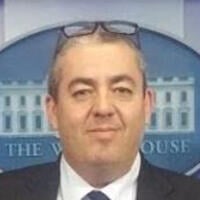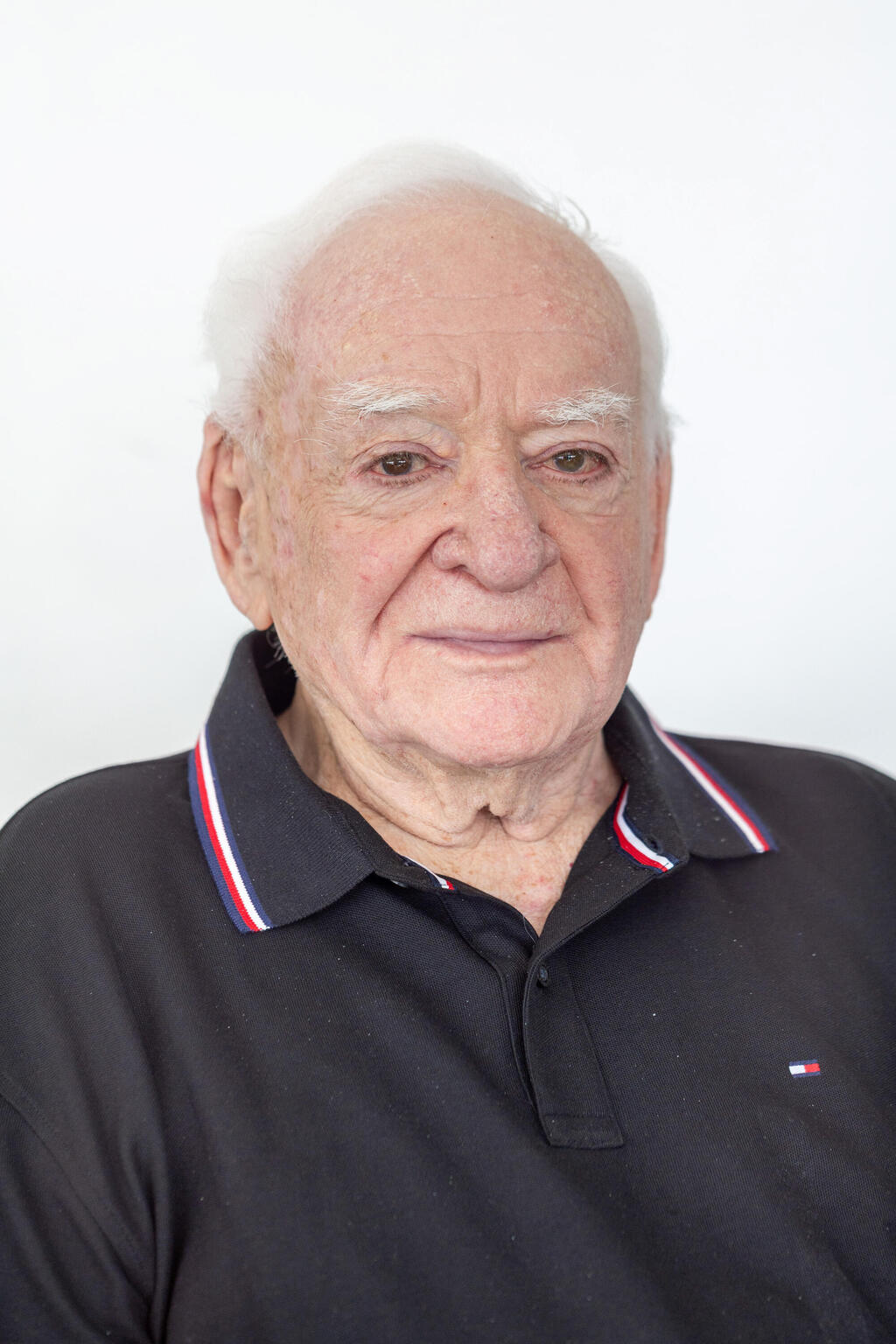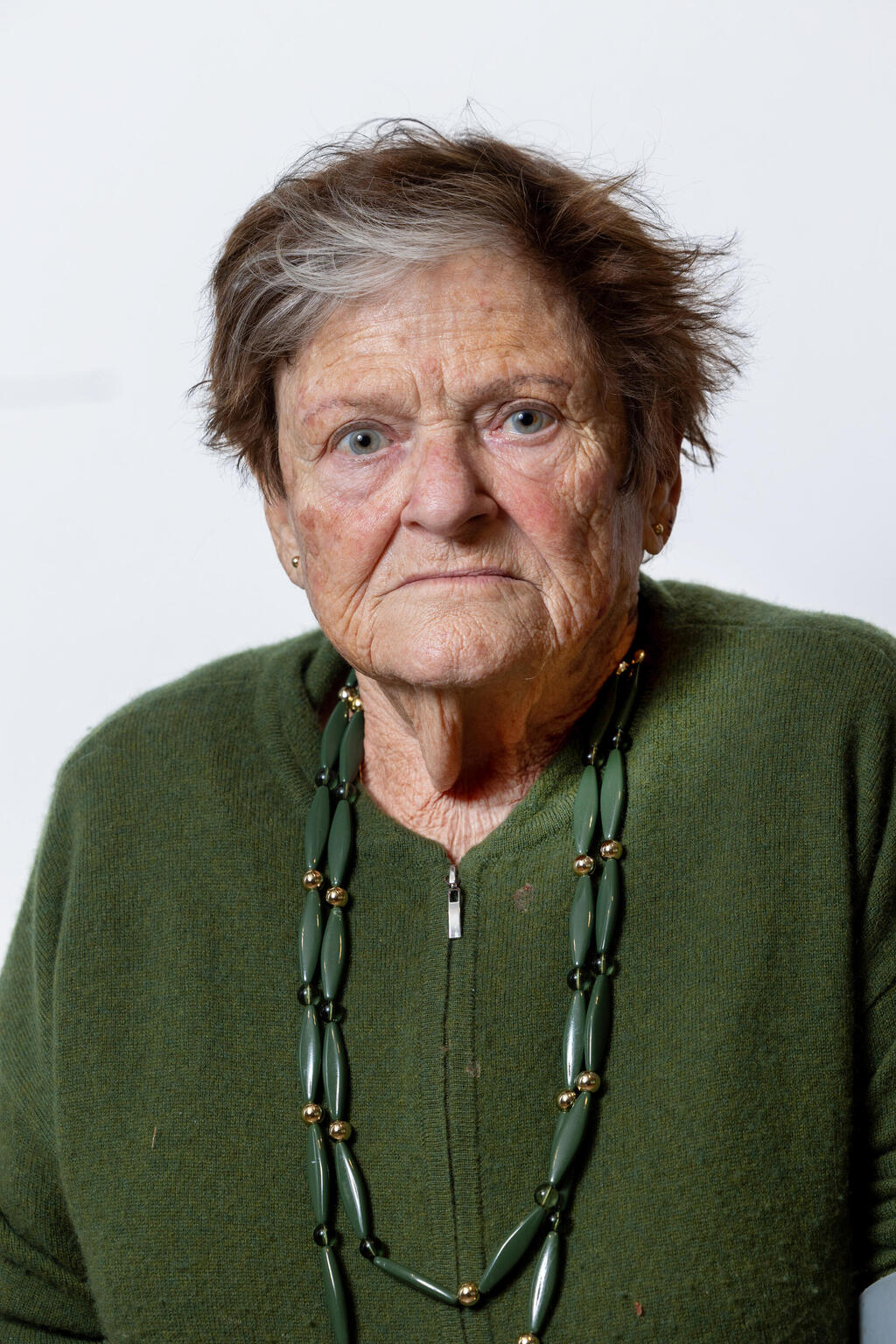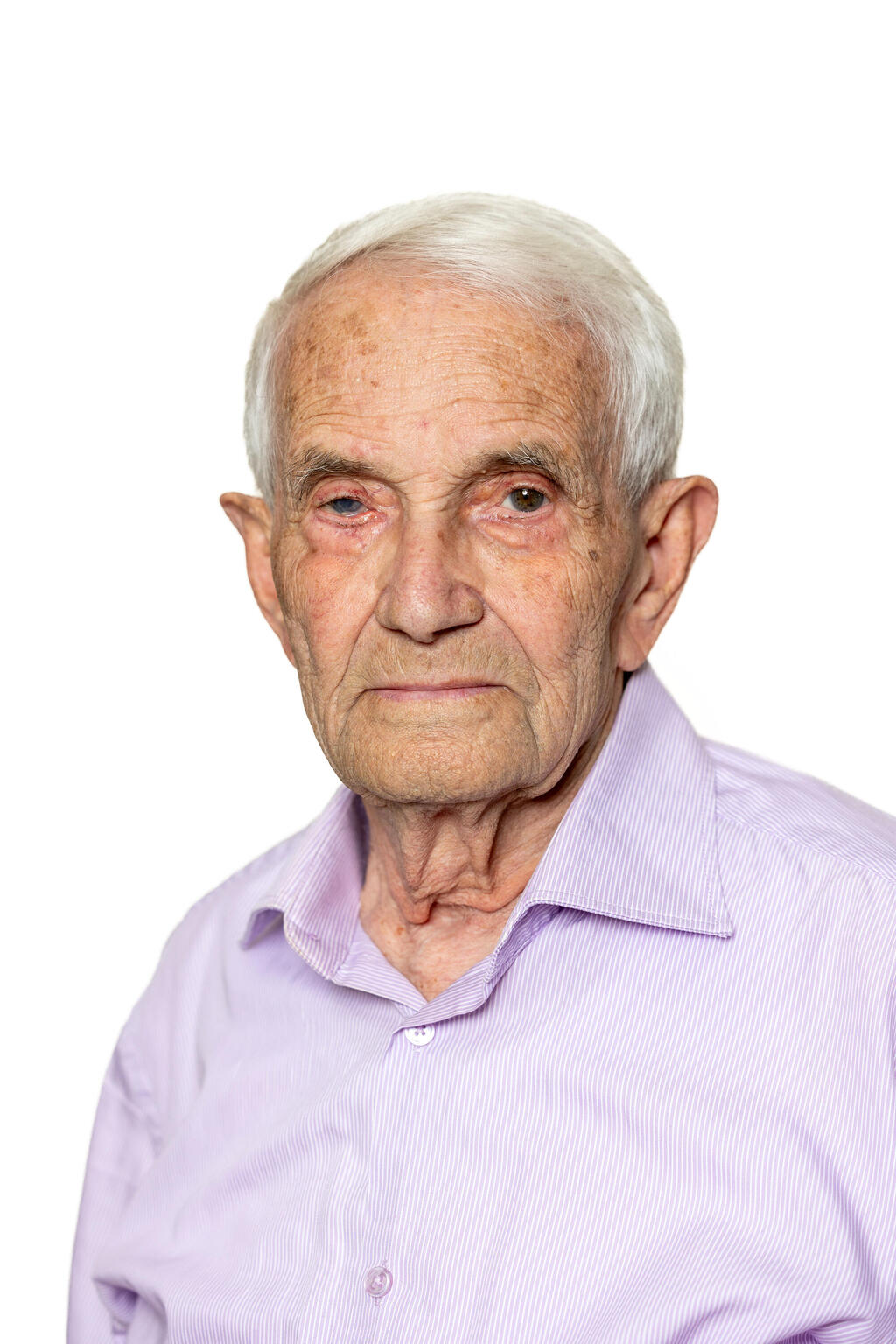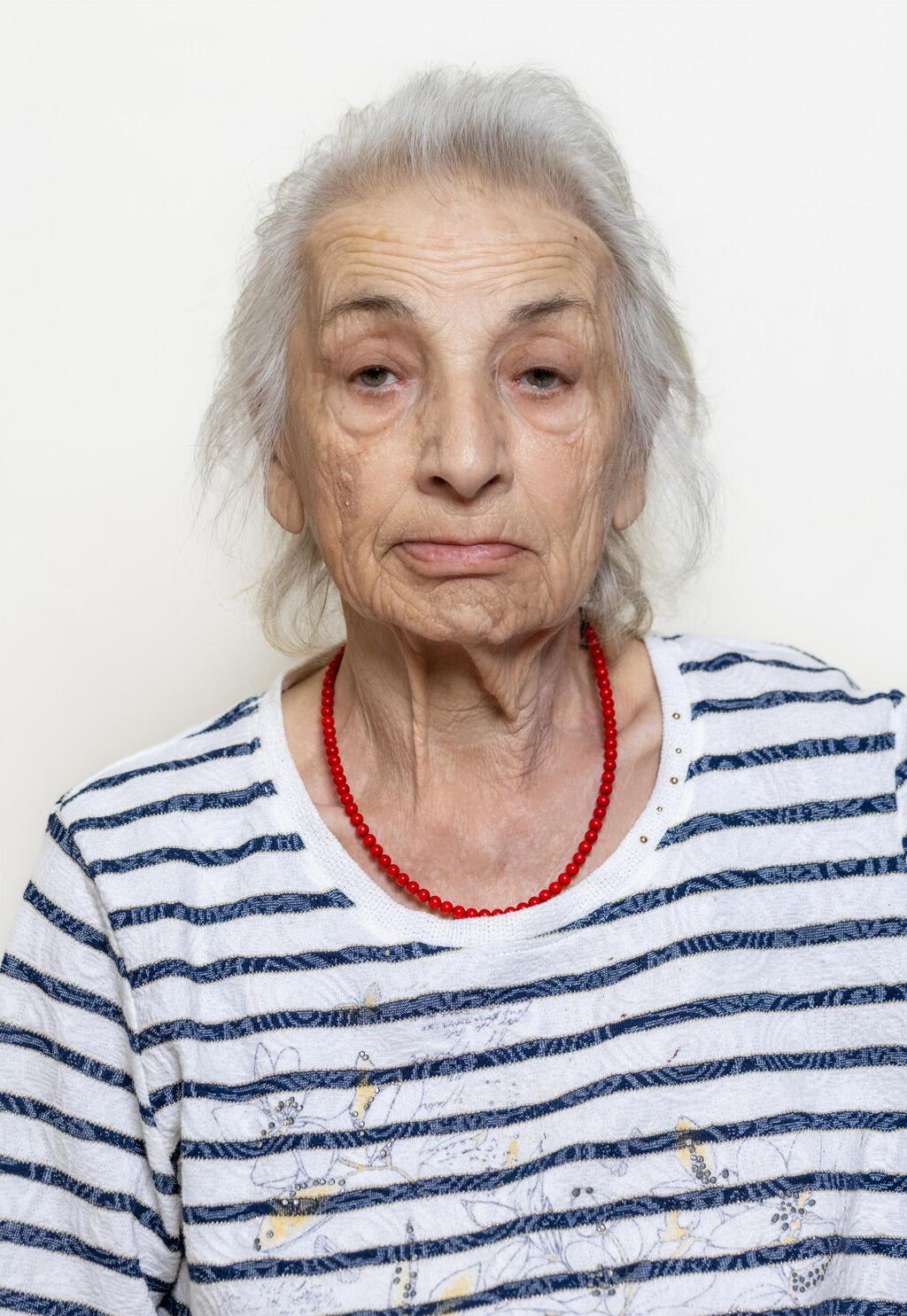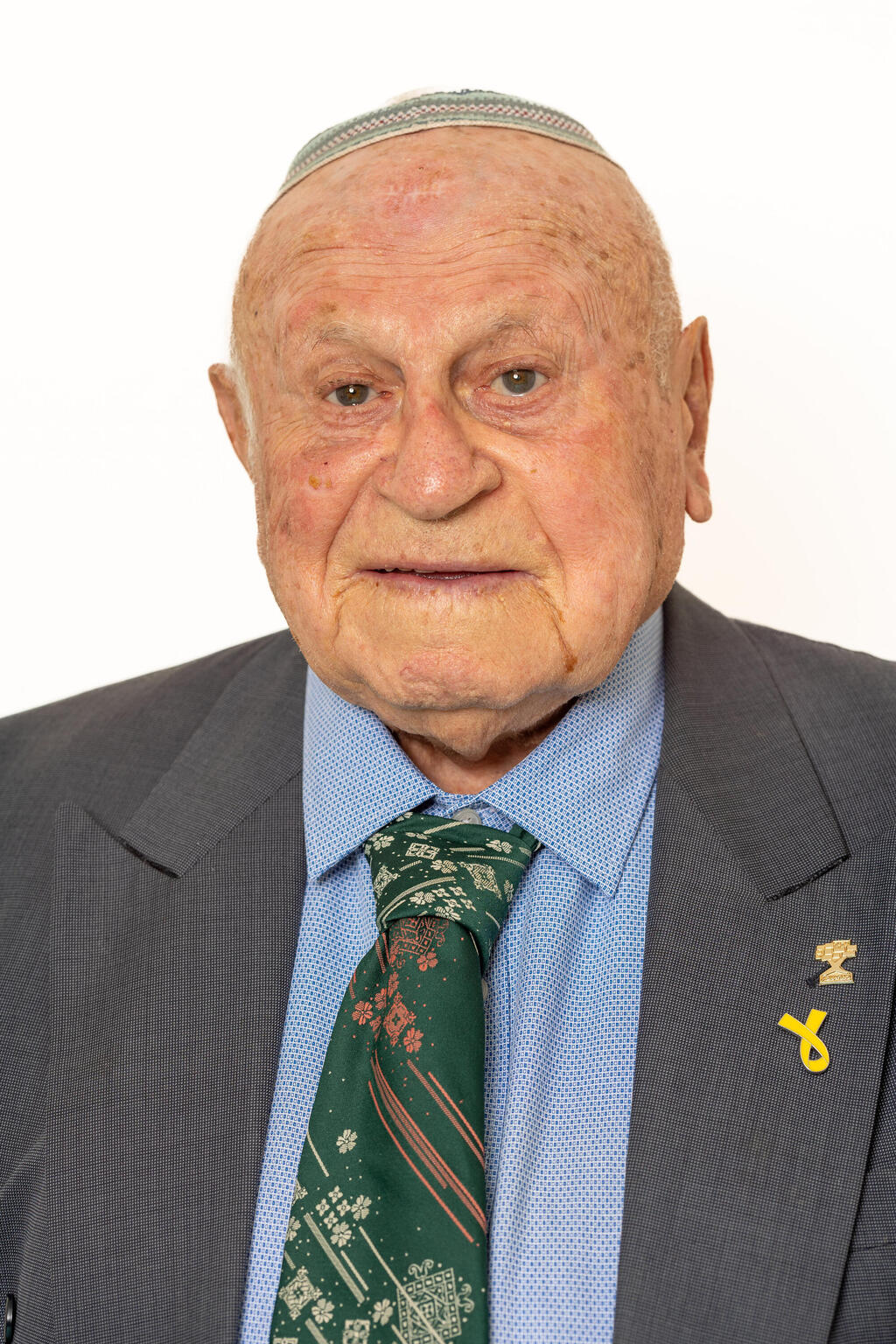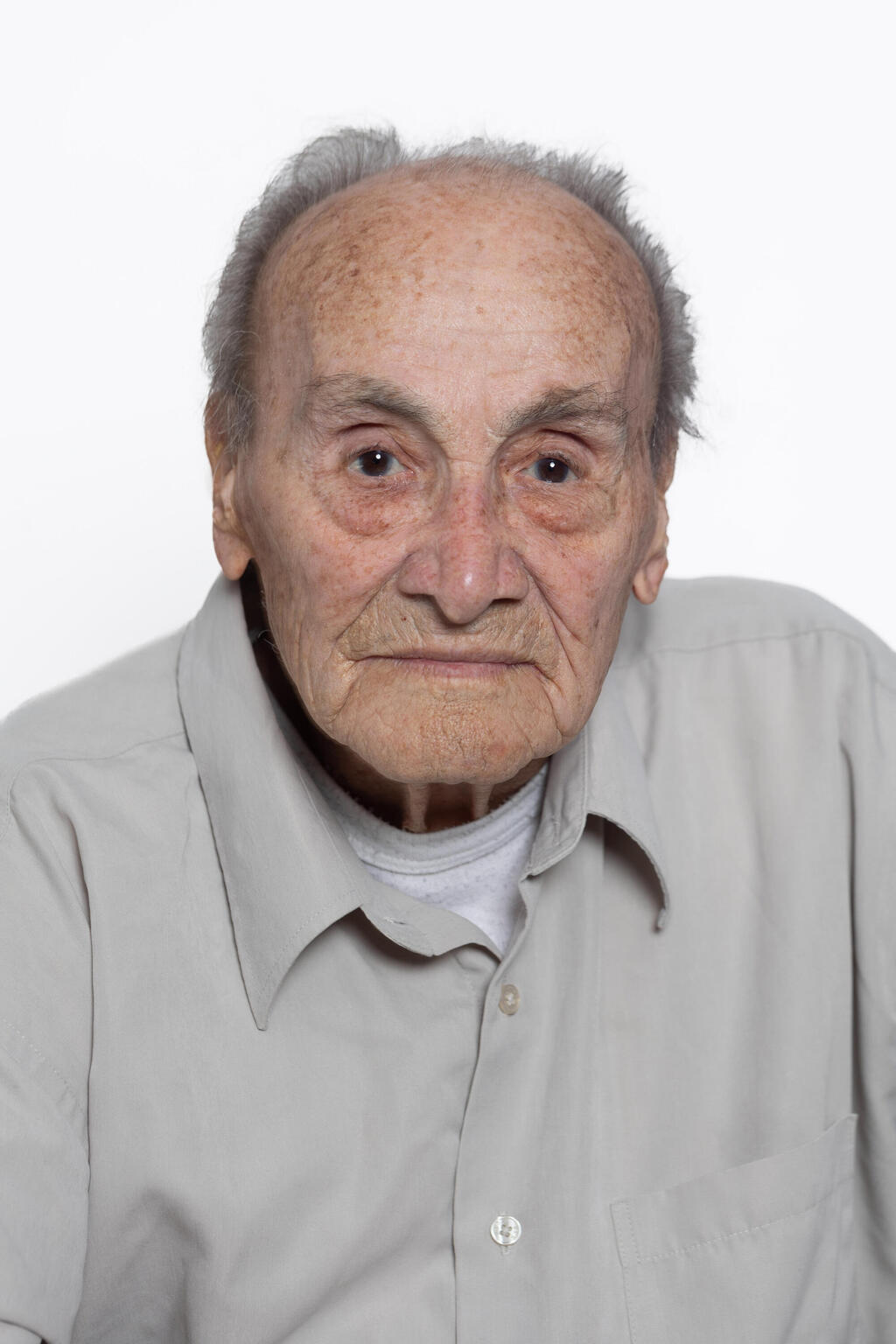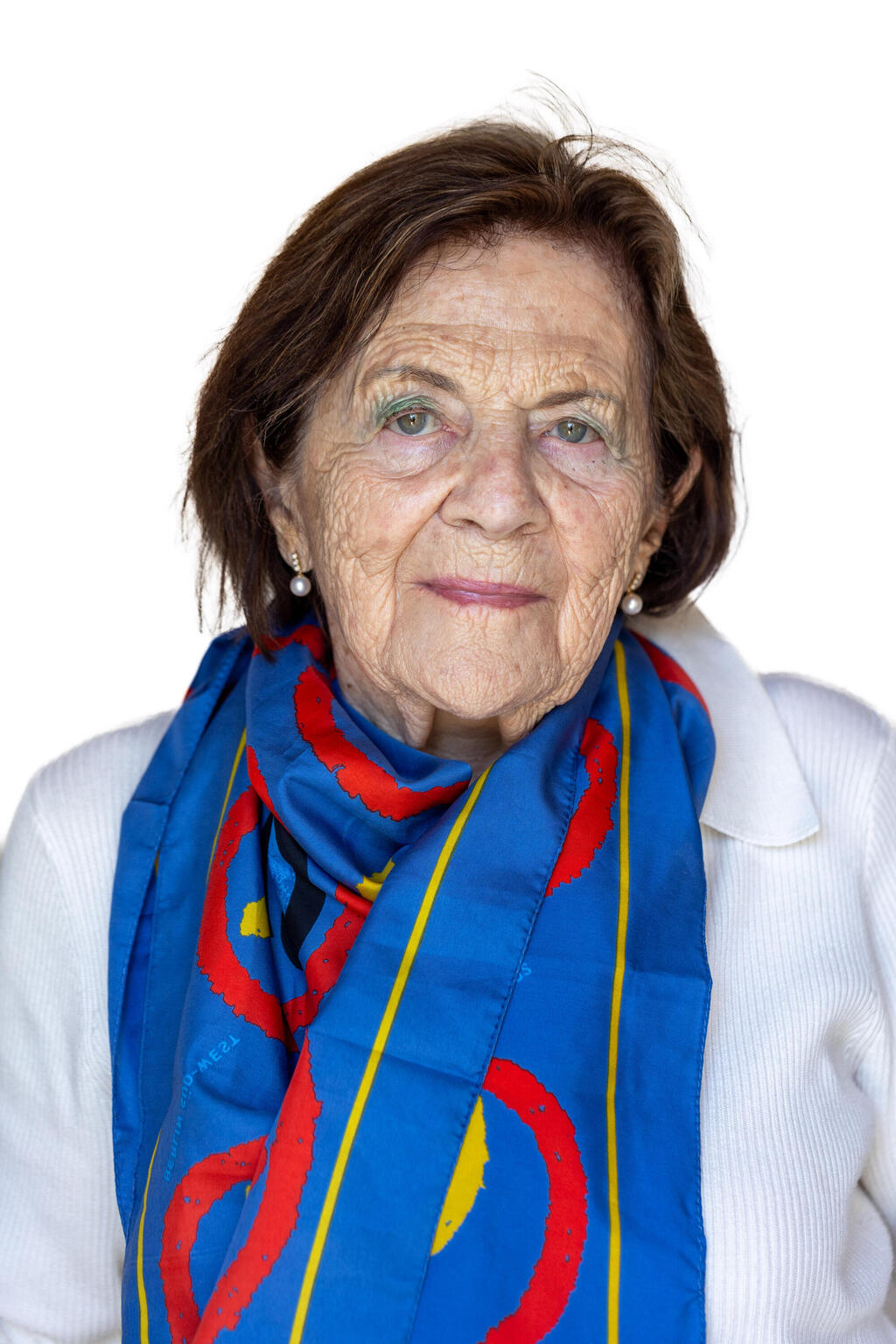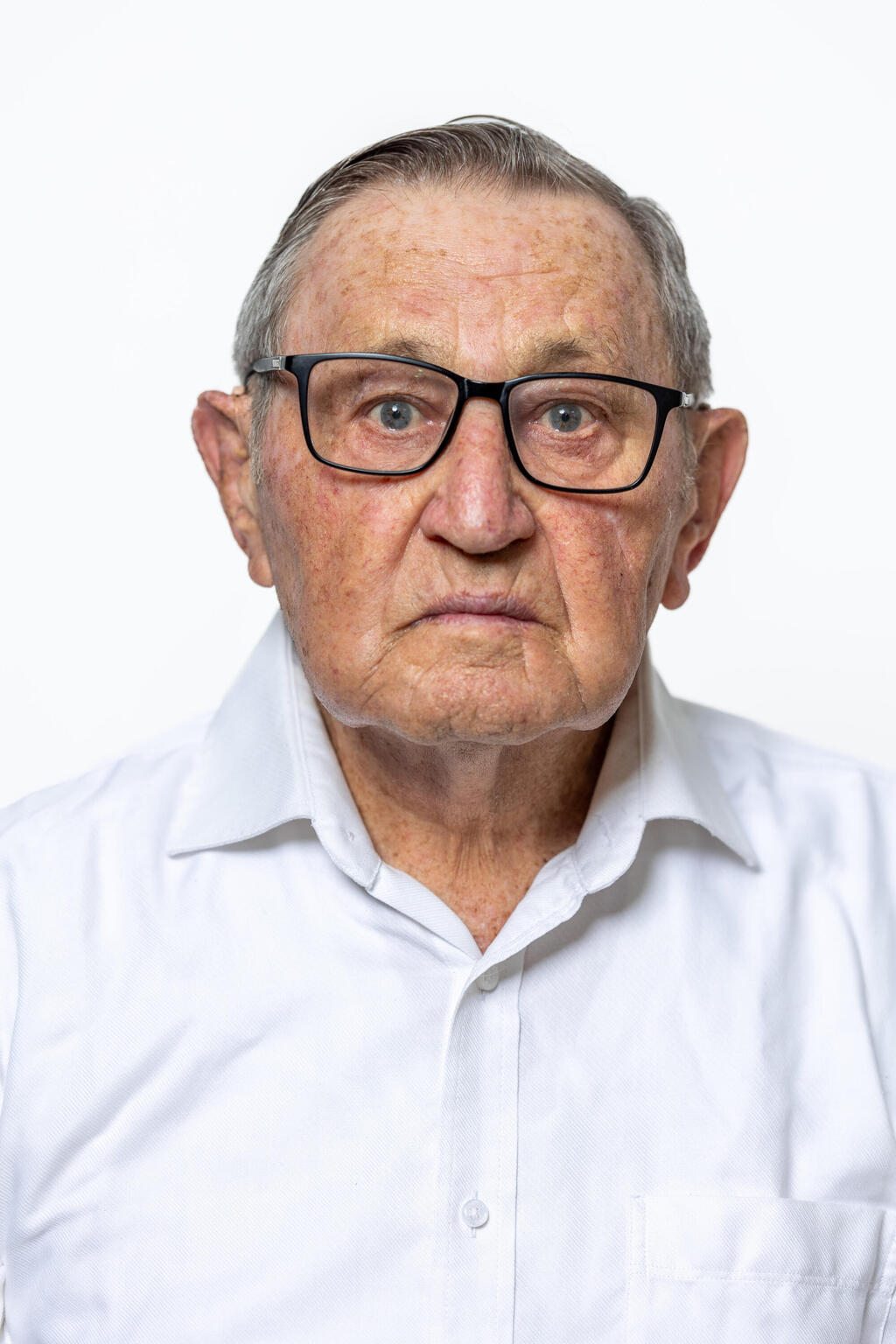Getting your Trinity Audio player ready...
Holocaust Remembrance Day will begin on Wednesday at 8:00 PM with the official opening ceremony at the Warsaw Ghetto Square at Yad Vashem. Speeches will be delivered by President Isaac Herzog and Prime Minister Benjamin Netanyahu. Six torches will be lit by Holocaust survivors: Arie Durst, Monika Barzel, Felix Sorin, Rachel Katz, Arie Reiter, and Gad Fartouk. Survivor Eva Erben will deliver the survivors' address.
Arie Durst
Arie Durst was born in 1933 in Lviv, Ukraine (then part of Poland). In June 1941, Nazi Germany invaded the Soviet Union and occupied Lviv. His father, Friedrich, was drafted as a doctor into the Red Army. During the Nazi roundups, Arie and his mother hid in the basement of Arie’s former caretaker, a non-Jewish woman. During one of the roundups, Arie's brother, Marian, and his entire family were murdered. Arie’s mother, Salomea, obtained forged documents and planned to flee to Warsaw. To avoid suspicion, she hired a Polish man to accompany them. In Warsaw, she rented a room in the home of a French widow and claimed that she and Arie were Polish Catholics. Arie was raised as a Catholic, attending church every Sunday and learning Christian teachings from the landlord.
One day, police arrived at the building, but the doorman delayed them long enough for Arie and his mother to escape. On August 1, 1944, the Warsaw Uprising broke out. Arie and his mother hid but were caught after a month and deported by train to the Pruszków labor camp. The two escaped to the town of Leshna Gura, where Arie worked as a peddler until liberation. After the war, they reunited with Arie’s father, who had reached Tel Aviv. In 1945, Arie, his mother, and father immigrated to Israel with certificates his father had obtained. Arie studied in a medical reserve program, served as a doctor in IDF’s Golani Brigade, and received a commendation for performing an improvised surgery under fire. He later established Israel’s first transplant unit, managed the surgical department at Hadassah Medical Center, and introduced innovations in surgery, oncology, and trauma care.
Arie and his wife, Dr. Ramona, have three children and eight grandchildren.
Monika Barzel
Monika Barzel was born in 1937 in Berlin. Her father, Eugen, was a doctor, and her mother, Edith, was a surgical nurse. Eugen fled to England, while Edith worked long hours at the Jewish hospital in Berlin to support the family. As a result, Monika was raised by her grandmother, Gertrude, in a single room in an apartment building in Berlin. Due to shortages, most of Monika’s memories revolve around food. In September 1942, Gertrude was deported to the Theresienstadt Ghetto, where she was murdered. Monika then moved in with her mother at the Jewish hospital. Until liberation, Monika roamed the hospital without formal schooling, with doctors, nurses, and patients as her only companions.
In February 1943, the "Factory Action" in Berlin took place, where Jewish forced laborers were rounded up and sent to Auschwitz to clear Berlin of Jews. In May, the Gestapo ordered the hospital director, Walter Lustig, to reduce the staff. He was forced to select 300 people to be deported to Auschwitz. Monika was placed on one of the deportation trains but was later ordered off. She contracted diphtheria and other illnesses but recovered despite receiving no treatment. From 1944 onward, she often stayed alone in shelters due to the bombings of Berlin and remained at the hospital until the end of the war.
After liberation, Edith and Monika left Berlin, first for Sweden and then for London. Edith married Rudy Friedman, a Holocaust survivor from Berlin who raised Monika as his daughter. Monika became a dentist in London and immigrated to Israel in 1962 with her partner, Ilan. The couple settled in Kibbutz Kfar HaNasi in the Upper Galilee, and Monika worked as a dentist until the age of 70. Monika and the late Ilan had two children and six grandchildren.
Felix Sorin
Felix Sorin was born in 1932 in Mogilev, Belarus. His father, Nathan, was a tailor and a communist activist. Despite this, the family spoke Yiddish and observed Jewish holidays. In 1939, the Soviets occupied eastern Poland, and the family moved to Ashmyany for work. When the Germans invaded the Soviet Union in 1941, the family fled eastward. Amid the chaos, Felix was separated from his parents and left alone under Nazi occupation. A stranger advised him not to reveal that he was Jewish or that his father was a communist.
Felix wandered alone for a long time, eventually reaching Minsk, where he was imprisoned in the ghetto and witnessed the murder of Jews. He escaped and was arrested but presented himself as a Russian orphan and was sent to an orphanage. Suspicion arose that he was Jewish, and he was sent to Minsk to face a committee. Felix insisted he was not Jewish, and his claim was supported by Vasily Orlov, a member of the committee. The committee’s secretary, who knew Felix, chose not to expose him. Orlov was later recognized as Righteous Among the Nations by Yad Vashem. Felix remained in the orphanage until the Red Army liberated the area in 1944.
After liberation, Felix feared that his family had not survived. One day, he discovered that his father was alive and serving in the Red Army. Soon after, his older brother, Isaac, surprised him at the orphanage, and Felix learned that his mother, Frida, and sister, Rosa, had also survived by fleeing eastward. The family reunited in Moldova. Felix studied at the Polytechnic Institute in Odessa and became a lecturer and researcher. In 1992, he immigrated to Israel, where he shares his story with youth, students, and educators through Yad Vashem and survivor organizations. Felix and his late wife, Ida, had two children, five grandchildren, and five great-grandchildren.
Rachel Katz
Rachel Katz was born in 1937 in Antwerp, Belgium, to a family of immigrants. She was the second of four children. Her parents, Feiga-Tzipora and Benjamin, had emigrated from Bukovina, Romania. Feiga was a seamstress, and Benjamin was a merchant and glazier. In May 1940, the Germans occupied Belgium. In June 1942, Benjamin was arrested and sent to a labor camp in France and later deported to Auschwitz-Birkenau, where he was murdered in November 1942. Feiga supported the family while caring for her four young children. The family moved between hiding places, aided by their neighbor Maria Louben, who provided them with forged documents and assistance. When German searches increased, Louben took Rachel and her siblings to her home and later found them refuge in a convent near Antwerp. Louben was later recognized as Righteous Among the Nations for her efforts.
After several months, the children were removed from the convent due to Gestapo raids and returned to Antwerp, where they lived in hiding with their mother under false identities until Belgium was liberated in September 1944. After the war, Rachel attended Tachkemoni School and worked to help support her family. In 1957, she immigrated to Israel, married, and raised a family. In 2000, she joined the Yad Vashem-affiliated organization Yesh (Children and Orphans of Holocaust Survivors) and currently serves as chair of Amcha, an organization supporting Holocaust survivors and their descendants. Rachel and her husband, Shmuel, have two children and three grandchildren.
Arie Reiter
Arie Reiter was born in 1929 in the town of Vaslui, Romania, the eldest son in a religious Hasidic family. Arie attended the Jewish school "Asah Tov" and a Talmud Torah. In 1939, the antisemitic Romanian regime closed the school Arie attended. His family was expelled from their home and moved into a wooden warehouse.
In 1941, Arie’s father, Eliezer, was taken to a Romanian forced labor camp and was murdered in 1943. Arie and his two younger brothers worked in shops to support the family and suffered from hunger. In January 1944, Arie was taken with dozens of children to a labor camp near the town of Ronc, Romania, where he worked paving roads in the forest and building a wooden bridge over a river—a bridge that still exists today. In the camp, Arie slept on a wooden bench in an abandoned cowshed, enduring cold and hunger.
In August 1944, the Red Army liberated the area, including the camp. Arie walked barefoot for 50 miles under Soviet bombings to return to Vaslui. When he arrived, he weighed a meager 66 lbs. He found his family, and together they lived in the basement of relatives, as their home had been destroyed in the bombings. Arie completed his studies at a school for commerce and economics. He joined the Bnei Akiva youth movement, became the head of the Vaslui branch, raised funds for the Jewish National Fund, and worked to promote youth immigration to Israel.
In 1947, he sent his two brothers to Israel aboard the illegal immigration ship Pan York and continued assisting aliyah efforts. In 1951, he immigrated to Israel and reunited with his family in Be’er Sheva.
Arie worked in the Finance Ministry and Bank Mizrahi, eventually becoming the bank's deputy CEO. He completed bachelor’s and master’s degrees in the history of the Jewish people, held various public roles, and established the Struma Museum and the Great Synagogue of Struma, where he has served as gabbai for over 60 years. In 2002, Arie was awarded the title of Distinguished Citizen of Be’er Sheva in recognition of his public service.
Arie and his wife, Yehudit, have five children, grandchildren, and great-grandchildren.
Gad Fartouk
Gad Fartouk was born in 1931 in Nabeul, Tunisia, to a religious family of 11. His father, Yosef, was a fabric merchant, a member of the community council, and a benefactor to the synagogue. Many of his customers were non-Jews. Jewish and Arab families in the city celebrated holidays together.
In November 1942, Nazi Germany occupied Tunisia. On a Friday evening, the family’s door was knocked on, and Yosef was ordered to report to the police station. Since Shabbat had already begun, he refused to travel by car and walked instead. He was detained for several hours. The next day, the family moved to Hammam Lif and lived under false identities. Gad’s mother, Oukhaya, became ill and passed away. Yosef remarried Marie, who cared for the children as her own.
As German presence in the city increased, Yosef went into hiding, and Marie sent Gad’s two brothers to hide in the forest. The rest of the family moved to live with an uncle in Gabès, who was protected from deportation due to his work with the French Navy. Over time, the family ran out of money and jewelry, which had been used to bribe Germans conducting house searches. They suffered extreme hunger and searched for food. Gad was sent to the marketplace dressed as a local Arab boy to gather food, often scavenging from garbage bins.
In May 1943, the Germans retreated from Tunisia. One day, a bearded man in non-Jewish clothing arrived at the house. Gad and his brothers didn’t recognize him at first, but it was their father. The family reunited, returned to Nabeul, and celebrated Gad’s bar mitzvah. They later moved to Tunis, where Gad became an active member of the Hashomer Hatzair ("The Young Guardian") youth movement.
In March 1948, Gad immigrated to Israel aboard an Italian fishing boat. He was accepted into Kibbutz Beit Zera and joined the Palmach. Later, he was part of a group that founded Kibbutz Karmia and eventually settled in Ashkelon. Gad was an amateur photographer and later turned his hobby into a profession.
Gad and his late wife, Mona, had four children and 13 grandchildren.
Eva Erben
Eva Erben was born in 1930 in Děčín, Czechoslovakia (now the Czech Republic). In 1935, her family moved to Prague. Eva studied ballet and played piano. After the German occupation in March 1939, the family’s home was confiscated, and they moved to a small apartment. Eva was banned from attending school or entering stores and was required to wear a yellow star. Jewish parents in the neighborhood organized private lessons in their homes for the children.
In December 1941, the family was deported to the Theresienstadt ghetto. At first, Eva and her mother lived in communal, overcrowded housing, later moving to an attic with her father. Eva worked in a vegetable garden and occasionally smuggled vegetables to her parents. She also visited the elderly, sang to them, and participated in the children’s opera Brundibár.
In October 1944, Eva’s father was sent to Auschwitz, followed by Eva and her mother. In Auschwitz, a friend advised Eva to claim she was 18 to be sent to work instead of the gas chambers. After three weeks, Eva and her mother were sent on a grueling march to perform forced labor at a camp in the Gross-Rosen system.
In January 1945, Eva and her mother were taken on a death march, during which her mother died in Eva’s arms and was buried in a mass grave. One night, Eva fell asleep in the corner of a barn. When the Germans woke the prisoners to continue marching, Eva was left behind. Exhausted, she continued alone toward the Czech border. A German soldier nearly killed her, but another told him it wasn’t worth wasting a bullet as she would soon die anyway.
Eva reached the village of Postřekov, where she collapsed. She was taken in by Ludmila and Kristof Jan, who cared for her lovingly until the war ended. The couple was later recognized as Righteous Among the Nations by Yad Vashem.
After the war, Eva went to a Jewish orphanage in Prague, studied nursing, and worked at a hospital. At a party celebrating the establishment of the State of Israel, she met Peter, a fellow survivor of Theresienstadt. They immigrated to Israel in 1949.
Eva is a witness to history, sharing her story in Israel and around the world. Eva and her late husband, Peter, had three children, nine grandchildren, and 15 great-grandchildren.
Yehuda Hauptman
Yehuda Hauptman was born in 1938 in Topoľčany, Czechoslovakia (now Slovakia). Following the collaboration between the Slovak fascist regime and Nazi Germany, the situation for Jews worsened, and the family moved to Budapest, Hungary, in 1941. In 1944, the Germans occupied Hungary, and Yehuda was forced to wear a yellow star. Yehuda’s mother managed to obtain Swedish citizenship documents for the family, and they found refuge in a protected house, but his father was sent to a labor camp. He escaped from the camp, hid in the forests, and returned home. Two weeks later, Nazi soldiers again took him to a labor camp. Yehuda’s grandparents were placed in the ghetto, where they helped his mother care for her four children. Due to the hunger, Yehuda would leave the ghetto to search for food scraps in garbage bins, which he brought back to his family.
In early 1945, the Soviets liberated Budapest, and Yehuda’s father returned from the labor camp. After the liberation, Yehuda’s mother was diagnosed with tuberculosis and hospitalized. Under the communist regime, the authorities demanded that children study on Shabbat, including writing, which conflicted with their religious beliefs. At this point, Yehuda’s father decided the family had to leave. In 1949, he was offered the opportunity to move to Austria. Due to his wife’s illness, he decided to send Yehuda and his sister Rachel ahead, paying smugglers to take them to the border. He stayed behind with his wife, hoping to join them later.
Yehuda and his sister reached Vienna, where they joined a youth group organized by Naftali Lau to immigrate to Israel. From Vienna, they moved to Italy and, in 1950, immigrated to Israel. They stayed with their uncle in Safed and later moved to a boarding school in Petah Tikva. Their mother passed away in Budapest. Yehuda’s father and two other sisters later immigrated to Israel. Yehuda joined Kibbutz Sha’alvim through the Youth Aliyah program, where he worked on a farm and studied. He enlisted in the Nahal Brigade and participated in Israel’s wars.
Get the Ynetnews app on your smartphone: Google Play: https://bit.ly/4eJ37pE | Apple App Store: https://bit.ly/3ZL7iNv
Yehuda and his wife, Yehudit, eventually moved to Moshav Tekuma, where Yehuda fulfilled his pioneering dream as a farmer. He held public positions in several local communities, contributed to their development, and worked to improve their welfare.
On October 7, Yehuda and Yehudit were at their home in Moshav Tekuma, located in the Gaza border region. They were evacuated from their home for four months, during which Yehuda deeply missed the land he loved so much. The distance reinforced his deep-rooted connection to the land, and he clung to hope for a return, to rebuild and overcome.
Yehuda and Yehudit have six children, 23 grandchildren, and ten great-grandchildren.


